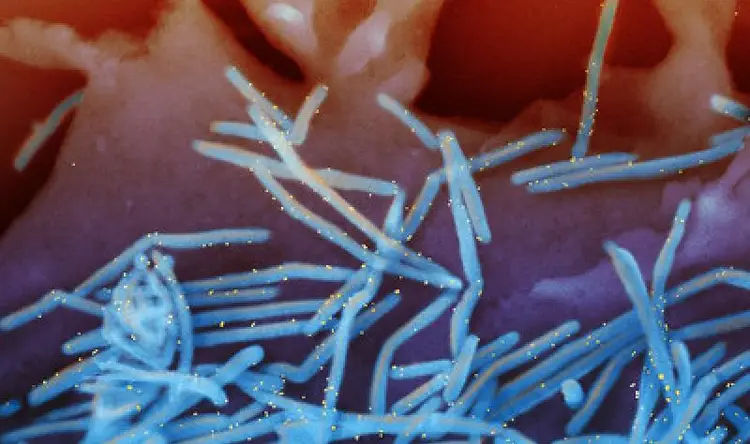Genomic surveillance tracks RSV evolution, identifies mutations in Minnesota

A recent study reveals that including the respiratory syncytial virus (RSV) in Minnesota's viral genomic surveillance program allows for ongoing tracking of this respiratory virus, which helps detect the rise of significant mutations and different strains.
Investigators from the Minnesota Department of Health (MDH) released their findings yesterday in the journal Emerging Infectious Diseases. They performed whole-genome sequencing on 575 respiratory samples taken from both hospitalized and non-hospitalized patients with respiratory syncytial virus (RSV) at 11 healthcare facilities across the state, covering the period from July 2023 to February 2024. The average age of the patients was 2 years, with 91.8% being adults, 53.4% female, and 5% aged 65 and older.
"Researchers have used whole-genome sequencing (WGS) for analyzing past cases of RSV and studying outbreaks in the United States, but there is currently no evidence that WGS has been utilized for forward-looking surveillance," they stated.
"One Clade Carries A Resistance Gene"
The analysis identified 287 genomes (49.9%) as subgroup A and 288 genomes (50.1%) as subgroup B. A significant majority of the RSV-A genomes (98.9%) fell into four complete genome lineages: A.D.1 at 10.8%, A.D.3 at 18.5%, A.D.5 at 38.0%, and A.D.5.2 at 31.7%. In contrast, 95.1% of the RSV-B genomes were categorized under the B.D.E.1 lineage.
Identifying groups within the viral population highlights how whole genome sequencing (WGS) could be valuable for spotting and studying RSV outbreaks at both state and local scales.
Analyses of diagrams illustrating evolutionary connections revealed that there is more variety in all RSV-A genomes compared to the RSV-B genomes. Phylogenetic studies that factored in the timeline related to the sequenced genomes suggested that the lineages began to diverge between 2 to 8 years prior to when the earliest samples were collected.
The researchers discovered single-nucleotide polymorphisms (SNPs), a form of genetic variation. Their comparisons revealed that 32.3% of the genomes were identical to at least one other genome, and 53% contained one SNP. They found 23 groups consisting of three or more genomes that were the same, which made up 19.5% of all the genomes examined.
A group of eight RSV-B genomes showed a mutation associated with resistance to the RSV monoclonal antibody nirsevimab (Beyfortus). It's probable that the most recent common ancestor of this group was in circulation during fall 2023.
To assess how well they could connect RSV genomes to documented cases of serious infections, the researchers compared the names and birthdates of RSV patients with sequenced samples against data from the Centers for Disease Control and Prevention's Respiratory Syncytial Virus Hospitalization Surveillance Network (RSV-NET).
Between October 2023 and January 2024, when specimen collection was at its highest, researchers gathered 531 genomes. Of these, 22% were associated with RSV-NET cases, accounting for 6.3% of all RSV-related hospitalizations during that time. Out of the 23 identified clusters, nine (39.1%) contained one or more RSV-NET cases, and 13.4% of the cases within the clusters were linked to RSV-NET.
Two patients from the RSV-NET study who had RSV infections linked to strain A.D.5.2 had been treated with nirsevimab. Among the eight RSV-B patients whose genetic makeup included the nirsevimab-resistance gene, one was identified in the RSV-NET group.
Investigating Outbreaks: A Key Role
The authors noted that the results demonstrate how whole genome sequencing (WGS) can provide valuable information about the spread of the RSV virus and the dynamics of its population. They pointed out that identifying clusters within the virus indicates that WGS could be useful for spotting and examining RSV outbreaks at both state and local levels. Additionally, their research introduced a new way to compare viral genomic data with clinical surveillance of severe RSV infections.
The team pointed out that their method of using a selective and localized sample restricted the depth of their analysis. They also noted that the narrow geographic and time frame of their research might have created differences in their time-related assessments and variations in how RSV has developed in Minnesota compared to other areas.
The researchers indicated that they plan to broaden their genetic and health-related data by collecting more specific samples. They will also conduct thorough analyses to study the emergence of mutations linked to vaccine resistance, severity of illness, and the ability to spread the disease.

















































